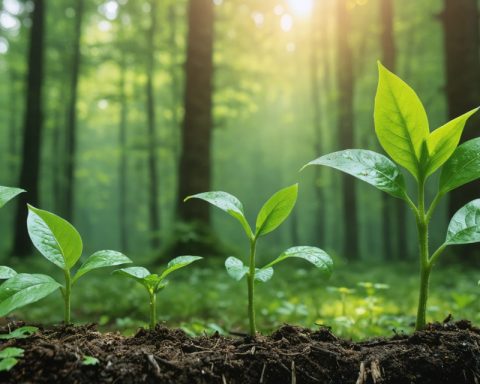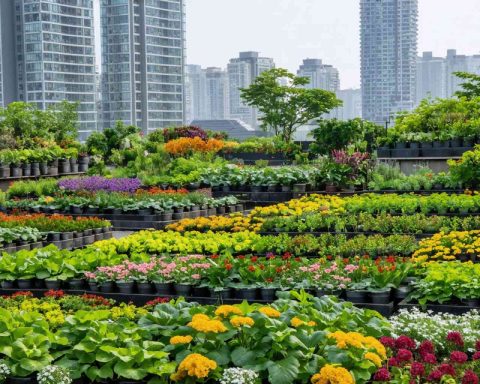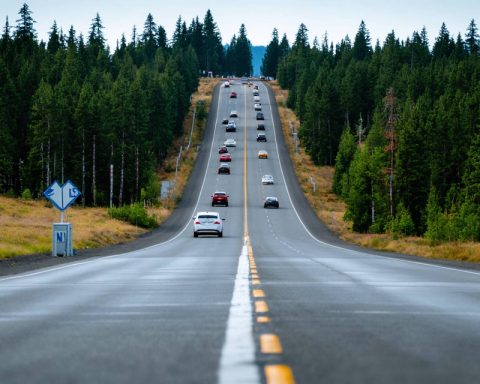- Green roofs transform urban landscapes by reducing urban heat and enhancing air quality, cooling ambient temperatures by up to 5 degrees Celsius.
- These rooftops manage stormwater effectively by intercepting rainwater, thus minimizing flooding risks and benefiting city drainage systems.
- The structure of green roofs offers natural insulation, aiding in energy conservation during both hot summers and cold winters.
- Beyond energy efficiency, green roofs support biodiversity by providing habitats for birds, bees, and butterflies, contributing to urban ecosystem health and pollination.
- Cities like Toronto and Paris serve as models, implementing policies that support the installation of green roofs, in line with sustainable urban development.
- Embracing the green roof trend is crucial for the sustainable future of cities, demonstrating commitment to environmental stewardship.
Glistening under the sun, a rooftop brimming with vibrant plants offers more than just a pretty view. Urban landscapes are undergoing a green revolution, with green roofs leading the charge. How exactly do these leafy havens bridge the gap between nature and urban sprawl?
Imagine burly sedums soaking up rays atop a once drab cityscape, transforming these rooftops into bustling ecosystems. Green roofs aren’t just picturesque; they are a potent force against urban heat. With concrete jungles notorious for absorbing heat, green roofs provide respite, cooling ambient air by up to 5 degrees Celsius. These living roofs intercept rainwater, reducing torrential runoff that often inundates city drains, fostering flood resilience.
The magic of green roofs lies in their simplicity. By layering membranes, soil, and plants, they craft natural insulation—locking warmth during frigid winters and warding off heat during scorching summers. This natural climate control slashes energy use in buildings below, aligning seamlessly with sustainable urban development goals.
Yet, it’s not just about energy efficiency. The rustle of leaves beckons diverse wildlife back into urban centers. Birds, bees, and butterflies find refuge, turning these spaces into mini-biodiversity hotspots. This reintroduction of flora and fauna not only enriches city life but also supports pollination, essential for our food systems.
Building green roofs aligns with the principles of E-E-A-T by marrying environmental consciousness, technical adeptness, and trustworthiness. Cities like Toronto and Paris have already charted a blueprint for success with comprehensive policies promoting green roof installations, echoing the sentiment of environmental stewardship.
So, as urban planners and architects eye new horizons, one resounding truth emerges: The sustainability of our cities hinges on embracing the green roof phenomenon.
The next time you take a stroll through your city, look up. You might just be passing by an oasis in the sky—a reminder that even in the bustling heart of a metropolis, sustainability blooms.
Why Green Roofs Are the Future of Urban Living: Unveiling the Hidden Benefits
Additional Facts on Green Roofs
Green roofs are more than just a fleeting architectural trend; they embody a multidimensional approach to urban sustainability. What makes them so vital in today’s city planning and ecological conversation?
Energy Efficiency and Cost Savings:
Green roofs provide extraordinary insulation, reducing both heating and cooling demands. According to a study from the National Research Council of Canada, green roofs can reduce air conditioning costs by as much as 75% in summer while minimizing heat loss in winter, lowering overall energy expenses for building owners.
Structural Benefits:
These roofs extend the lifespan of the roof membranes below by shielding them from extreme temperatures and UV radiation. The additional layers of soil and plants absorb impact, reducing wear from environmental stressors.
Mental Health and Well-being:
Exposure to green spaces has been linked to stress reduction and improved mental health. A study by the University of Exeter found that people living in urban areas with more green space were more likely to report higher well-being and lower psychological distress.
Water Management and Pollution Reduction:
Green roofs play a significant role in urban water management by acting as a sponge during rainfall events. They reduce the volume and velocity of runoff, decreasing flood risk and filtering pollutants from rainwater, leading to cleaner downstream water bodies.
Market Forecasts & Industry Trends
The global green roof market is predicted to grow substantially, driven by increasing urbanization and governmental regulations. A market research report by Allied Market Research forecasts a compound annual growth rate (CAGR) of 15% from 2020 to 2030. As awareness about the benefits they offer grows, more businesses and municipalities will likely adopt this eco-friendly technology.
How-To Steps & Life Hacks for Implementing Green Roofs
1. Assess Structural Load:
Ensure your building’s architecture can support the additional weight of a green roof. Consulting with a structural engineer is recommended.
2. Choose the Right Plants:
Select plant species that are native, drought-resistant, and suitable for the climate. Sedums, grasses, and small shrubs are popular choices.
3. Layering Technique:
Utilize a multi-layer system, including a root barrier, drainage layer, filter fabric, growing medium, and vegetation layer to ensure effective water management and plant health.
4. Regular Maintenance:
Schedule routine maintenance, such as weeding, irrigation, and plant replacements, to ensure the longevity and health of the green roof ecosystem.
Pros & Cons Overview
Pros:
– Insulates buildings, reducing energy costs
– Extends roof life and reduces maintenance
– Mitigates urban heat island effect
– Promotes biodiversity and wildlife habitat
– Enhances city aesthetics and increases property value
Cons:
– Initial installation and engineering costs can be high
– Requires regular maintenance and expertise
– Load-bearing limitations on some existing buildings
Security & Sustainability Considerations
Sustainability:
Green roofs contribute significantly to sustainable urban development. They help cities meet various environmental goals, addressing issues like carbon footprint reduction and urban sustainability policies.
Security:
While adding a green roof generally enhances the structure’s environmental resilience, ensuring the surface can bear additional weight is crucial. Engage professionals to assess and certify your building’s suitability for a green roof.
Actionable Recommendations
Quick Tips:
– Begin small with a pilot project to demonstrate benefits.
– Partner with local environmental organizations for insights and support.
– Consider subsidies or tax incentives offered by governments for green infrastructure projects.
For more detailed support and resources, visit credible organizations such as the Green Roofs for Healthy Cities.
Green roofs promise a future where sustainability is woven into the very fabric of our urban landscapes. By embracing this technology, cities can offer cooler, cleaner, and more vibrant experiences for all inhabitants.






















